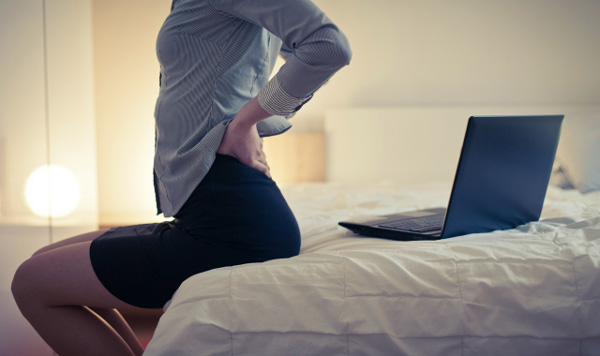Expert Q&A: Tips on how to cope with back pain

By Neil Bartlett
Are you one of the millions of Americans who suffers from chronic back pain? According to the American Association of Neurological Surgeons, about 80 percent of Americans will be affected by this type of pain during their lifetime.
So if you have back pain, what can you do to cope with it? And is there anything you can do to stop it?
NetQuote chatted with Dr. Patrick Roth, a board-certified neurosurgeon, founding member of North Jersey Brain and Spine Center, and chairman of the Department of Neurosurgery at Hackensack University (NJ) Medical Center. His focus is minimally invasive spinal surgery, back pain rehabilitation, and exercise and diet.
He also authored “The End of Back Pain: Access Your Hidden Core to Heal Your Body.” We asked him about the two types of back pain, how to get the most from your health care system, and what you can do to help yourself.
A survey from the American Society of Interventional Pain Physicians and Smith & Nephew Endoscopy shows that a majority of lower back pain (LBP) sufferers would be willing to skip sex or experience a root canal if it meant no more back pain. Does this surprise you?
There are two types of back pain. Acute back pain is usually the result of an accident like stepping on a nail. If you experience this, you’ll use words like “sharp” or “stabbing.”
What’s ironic about acute back pain is that if you do nothing to treat it, it will often recede in a few weeks.
Chronic back pain, on the other hand, means the individual experiences it over a long period of time. This is the type of pain that individuals mean when they say they’re willing to skip sex, for example.
Unfortunately, the help health care providers can give is limited. But that doesn’t mean there aren’t things you can do to improve your condition.
Fortunately, both types of back pain can be improved by strengthening your inner core — the muscles around your back. This is not the same as abs work, which only strengthens the muscles in front of you. The more important muscles are behind you and on your sides.
How can you know if your pain is serious enough to warrant a visit to your doctor?
The Mayo Clinic recommends you visit your doctor if:
- Your back pain is constant or intense, especially in the evening or when you lie down.
- It spreads down one or both legs especially below the knee, and it causes weakness, numbness or tingling in both legs.
- You experience weight loss you can’t explain, or there’s swelling or redness on your back.
Investigate the pain further if you injure your lower back, causes new bladder or bowel problems, or you have a fever.
What are some things I can do to help alleviate back pain now and in the future?
Do the right types of exercise that strengthen all the muscles around your lower back.
Education is power. Learn as much as you can about your back and how it functions. Realize that what you’re dealing with is more than just the pain signals. Your mind and body work together.
What are the barriers to treatment for LBP sufferers?
Many people assume their pain is coming from an injury or something broken and that it can be fixed. The truth is that we often can’t find out what it is. And even if we see something on an MRI, fixing that doesn’t always improve your back pain.
How your back pain is treated depends on who you see. If you visit a chiropractor, you’ll get chiropractic treatment. If you visit a physical therapist, you’ll get exercises. If you see a pain management specialist, you’ll be treated with pain management. A surgeon may recommend surgery.
It’s best to meet with someone who’s aware of their “bias” in treating LBP and is aware of other options.
How can I work most effectively with my health care provider?
When you do visit one of these experts, form a partnership with him or her. You’re much more likely to experience success if you do this and not just assume they have some type of “quick fix” for your back.
The way our health care system is set up is often problematic for people with back pain. The focus is on fixing a problem and assuming everyone has the same problem and not customizing it to your situation. You can do an Internet search to find out what kinds of treatments are available. Find an approach with which you resonate.
What hope can you give to LBP sufferers?
In nearly all cases, there are things you can do to improve your situation. What’s crucial is to have skin in the game — be an active participant in not just finding an immediate solution to your pain, but to realize that through education and effort, you can be part of your own back pain solution.
